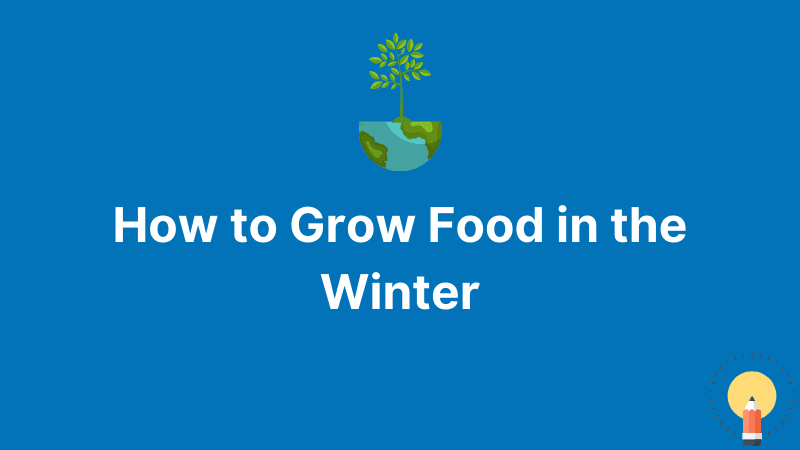Season Extenders: How to Grow Food in the Winter
Many people assume that when the weather becomes cold, you can't cultivate vegetables. They'd be mistaken! Cold-hardy veggies flourish at these conditions when season extenders are used. Your crops will grow and thrive if you prepare ahead of time.
Do you want to cultivate food throughout the winter? Let's have a look at some season extenders.
Why is Growing Food in the Winter Difficult?
Because plants struggle to thrive in cold temperatures, most gardeners aim to cultivate vegetables in the summer. Plants, believe it or not, suffer in the winter not only because of the cold weather, but also because of the lack of sunshine.
Cold resistant veggies flourish in colder temperatures, and establishing a winter garden is simple if you utilize season extenders. As a result, season extenders are an important component of a winter garden. They enable you to prolong your harvest and safeguard your crops from harsh winter conditions.
Consider season extenders to be similar to your winter coat. Your face feels chilly, and you may not be very warm. The coat, on the other hand, retains heat and shields your body. Season extenders raise the temperature surrounding the plants by several degrees, which has an effect.
The absence of sunshine is the second reason plants do not grow in the winter. Plants need at least 10 hours of direct sunlight every day to flourish. Proper planning enables the plants to mature before your area gets fewer than 10 hours of sunlight every day.
While season extenders cannot compensate for a shortage of sunshine, they could be used to assist your plants develop until your area has fewer than 10 hours of sunlight each day.
The 5 Types of Season Extenders
Cold Frames
A cold frame is an excellent do-it-yourself project. A wooden box with an antique window and a hinge may suffice. Cold frames resemble little, elevated beds that are encased with plastic or glass. The plastic or glass captures and traps sunlight.
Throughout warmer weather, the glass or plastic must be able to flip open to enable heat to escape. In an ideal world, you could remove the top during the summer and reattach it when the winter weather arrives.
Cold frames may also be used to harden off seedlings. So, in the spring, use them to start lettuce and greens. A cold frame is ideal for providing fresh lettuce and other greens throughout winter.
Row Covers
Row covers, also known as floating row covers or garden cloth, are a popular choice for season extenders. It's a small piece of fabric that protects your plants from the elements such as cold, wind, and pests. At the same time, row coverings enable light to penetrate while yet allowing rain to reach the soil.
Row coverings are a wonderful option if you live in a moderate climate. Those who live in frigid weather need rely on something different if they want to have a winter garden. Another alternative is to combine two layers of cloth.
In the springtime, floating row covers are ideal for covering plants. These coverings may be used to produce lettuce and spinach early in the season.
Greenhouses
Greenhouses, often known as high tunnels, may be as basic or as complex as you choose. Putting up a greenhouse on your property might be an investment. Greenhouses will wind up being worth the money and effort for committed growers.
Greenhouses may be made of wood or plastic, or they can be made of metal hoops and covered with greenhouse plastic.
Heaters and unheated greenhouses are also options. Some greenhouses are big sufficient that you can safely stroll through them. If you plant often, you may build a huge greenhouse and bring your children along. A large greenhouse may easily accommodate a playpen!
Low Tunnels
As the name implies, low tunnels are the inverse of high tunnels. They resemble high tunnels but are smaller in size, and they often cover one or two garden beds at a time. Crops are protected from frost and cold wind by low tunnels.
Low tunnels are popular among gardeners since they are affordable and simple to set up. You may remove and reposition them anytime you wish. Most modest tunnels may survive for many years, so your little investment will go a long way.
The only issue with low tunnels is that you may need to use something to keep the material down, such as sandbags. During severe storms, it may fall off.
Cloches
A cloche is a little cover that fits over the top of one plant to safeguard it from the elements. Some gardeners use bell-shaped glass cloches, while others prefer the more common choice of a plastic milk jug with the bottom cut off.
Larger, rectangular plastic cloches that cover more than one plant may be purchased. Cloches aren't the best option if you have a lot of plants. As you would expect, getting enough cloches to cover a big garden might be costly or difficult. These are more suitable for small-scale gardening.
Final Thoughts
Gardeners might benefit greatly from season extenders. You must monitor the temps inside and outdoors regardless of the extension you use. Plants need enough ventilation at all times. You don't want your crops to freeze or burn.
Always check to verify that the ventilation in your choice is enough, and keep in mind that you may have to manually open and shut the extenders as the weather changes.
You may produce food in the late autumn and winter by using season extenders. You'll be able to generate more food than you ever imagined. No one can deny that season extenders may quadruple your crop every year.






